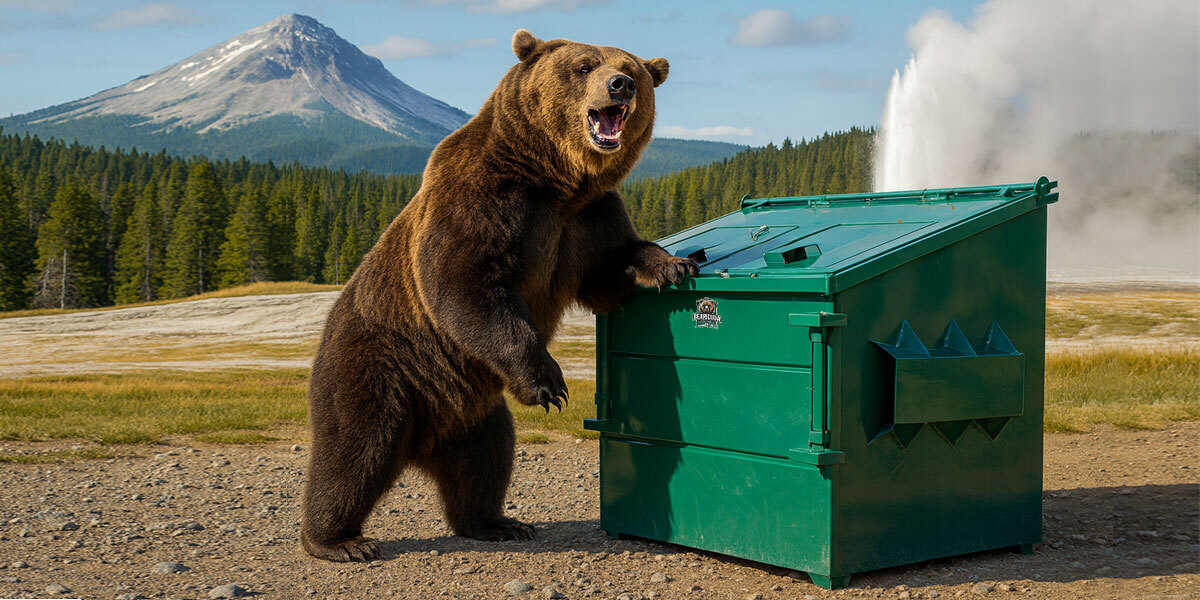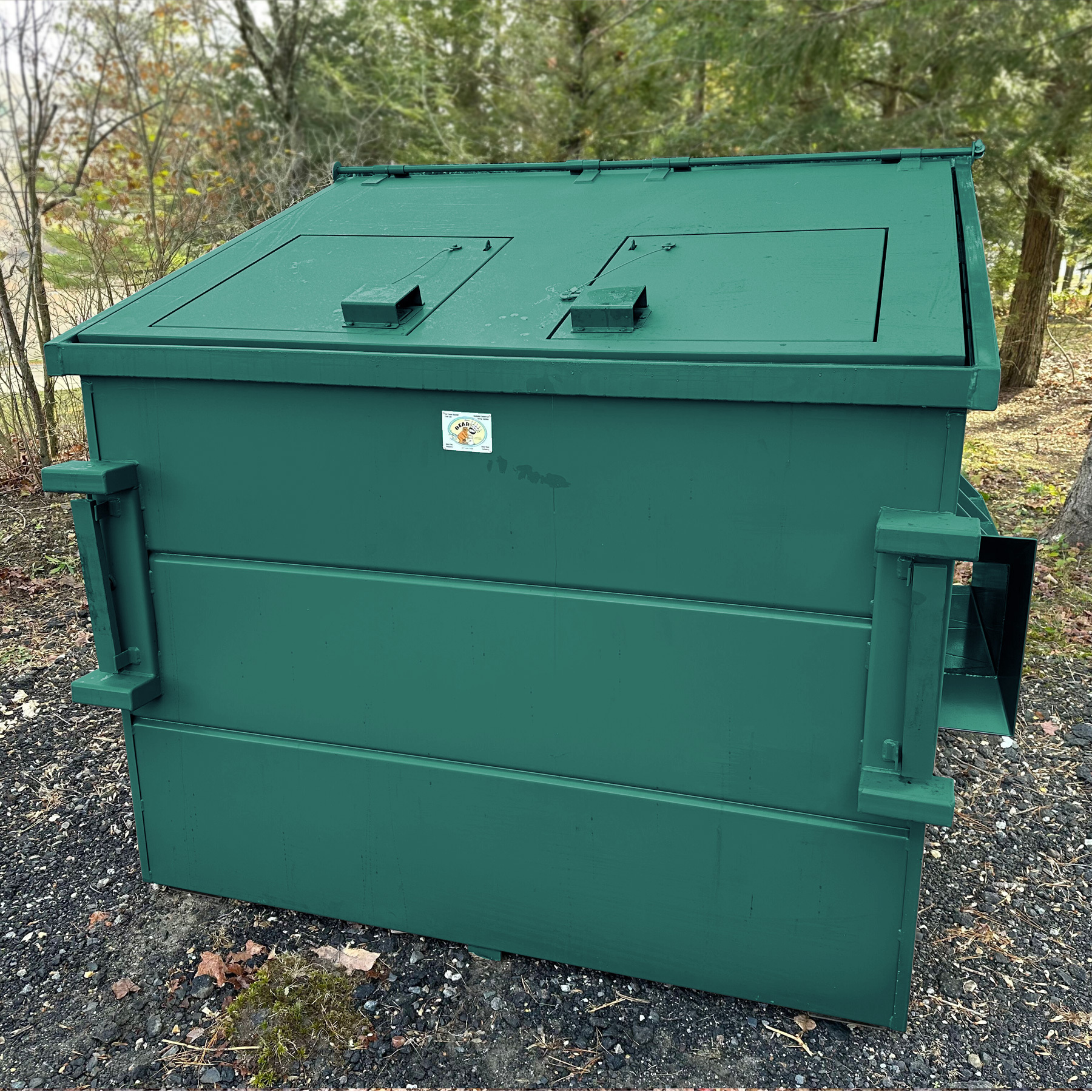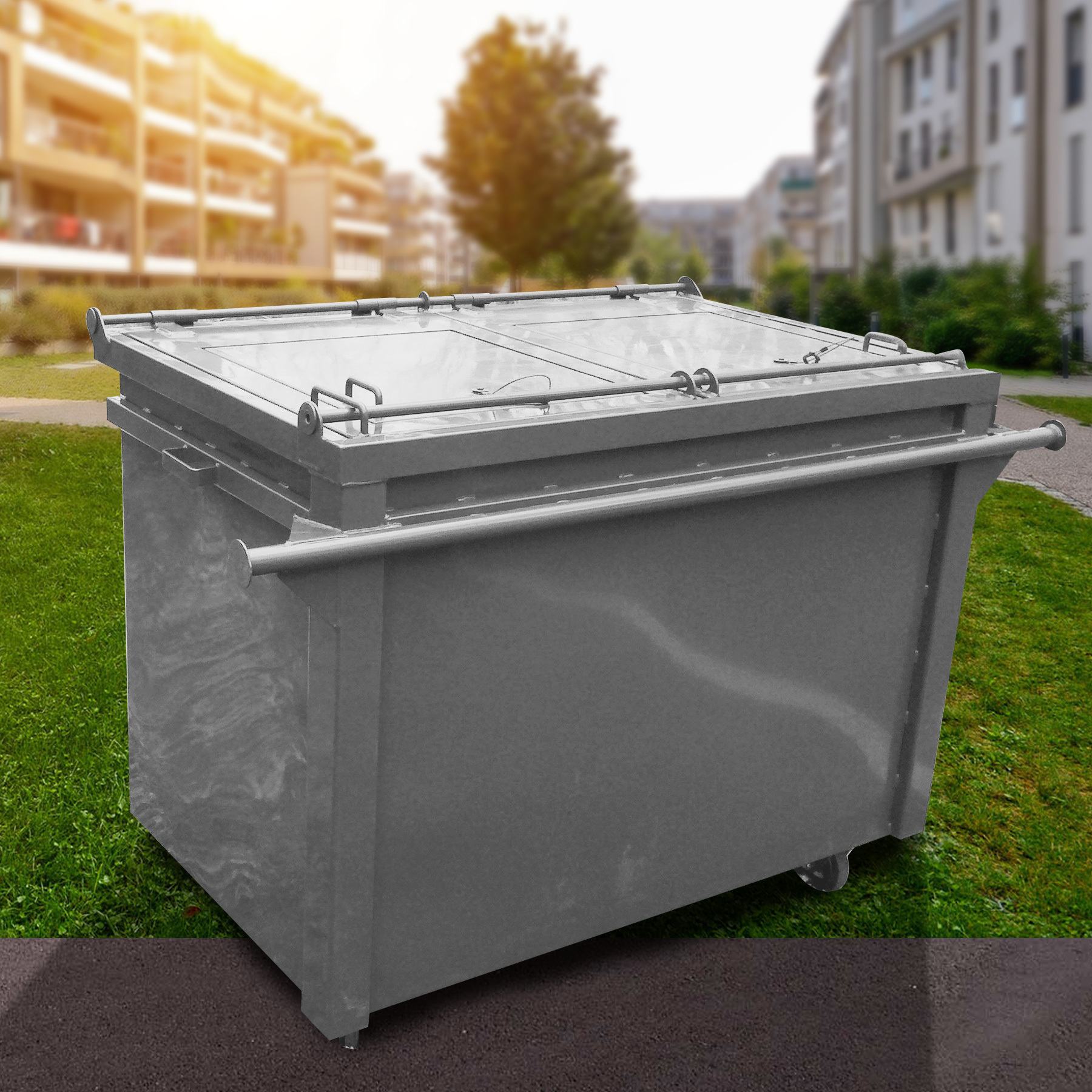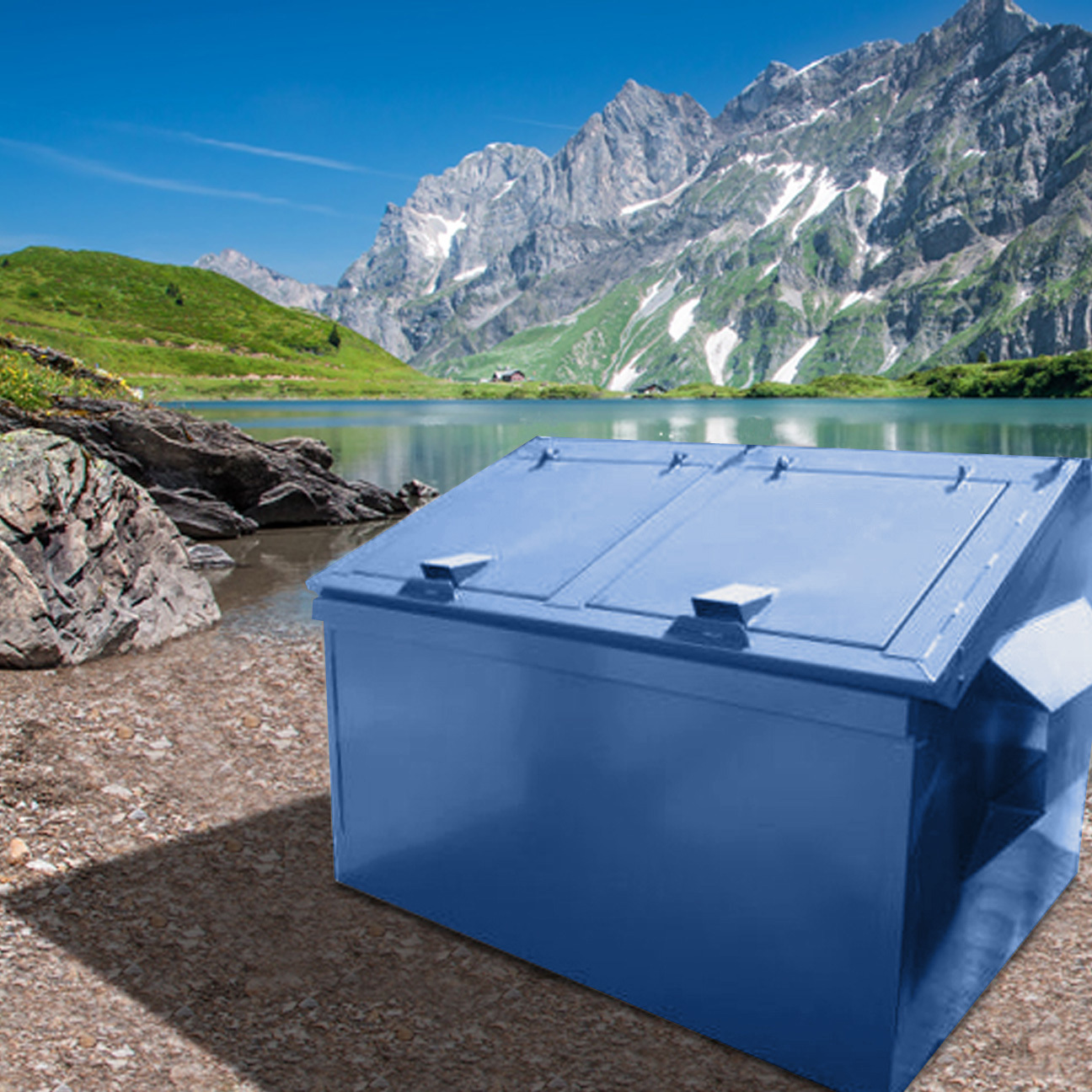Bear Proof Dumpsters: A Practical, Proven Solution
Why Bearproof Metal Dumpsters and Waste Systems Matter.
Before diving into technical features, it’s worth underscoring why they’re needed on rear-load and front-load dumpsters:
- Safety: Bears drawn by garbage can become habituated and dangerous. Securing access to waste is a frontline strategy in reducing human–bear confrontations.
- Property Protection: Torn lids, bin damage, and scattered trash are common when bears rummage through unsecured dumpsters.
- Wildlife Management: Reducing food availability discourages bears from frequenting developed areas.
- Costs: Cleanup, repairs, and potential liability (if a bear injures someone) add up. Investing in better containment can pay dividends over time.
So the goal is not absolute “proof” (in the sense of total invulnerability), but durable, robust, and consistently effective deterrents.

Bear Proof Dumpsters: A Practical, Proven Solution
Why Bearproof Metal Dumpsters and Waste Systems Matter
Before diving into technical features, it’s worth underscoring why they’re needed on rear-load and front-load dumpsters:
- Safety: Bears drawn by garbage can become habituated and dangerous. Securing access to waste is a frontline strategy in reducing human–bear confrontations.
- Property Protection: Torn lids, bin damage, and scattered trash are common when bears rummage through unsecured dumpsters.
- Wildlife Management: Reducing food availability discourages bears from frequenting developed areas.
- Costs: Cleanup, repairs, and potential liability (if a bear injures someone) add up. Investing in better containment can pay dividends over time.
So the goal is not absolute “proof” (in the sense of total invulnerability), but durable, robust, and consistently effective deterrents.
Core Features & Design Principles of Effective Bear-Resistant Dumpsters
Here are the design and engineering features that separate bear-resistant from “just locked” dumpsters, along with how they address the challenges raised by poly dumpster manufacturers.
FEATURE |
WHY IT MATTERS (Bear Deterrence) |
EXAMPLES / BEST PRACTICES |
Heavy duty, rigid construction (steel or reinforced composites) |
Prevents bending, prying, or deformation by teeth or claws on trash cans |
Thicker 14-gauge steel shells, internal reinforcing ribs, or composite panels |
Interlocking lids & lips |
Makes gaps minimal, so bears can’t wedge in tools or pry open seams |
Overlapping flanges, double-edge joints |
Positive locking mechanisms |
Prevents accidental opening; locks must engage automatically or be difficult to defeat |
Spring-loaded locking bars, cam-style locks, gravity latches that lock when lid closes |
Bear-resistant hinges |
Hinge pins shielded or captive so that bears can’t remove hinge to open lid |
Encapsulated hinge assemblies, anti-tamper pins |
Seals and gasket systems |
Reduces odor escape and blocks bears’ sense of smell (which attracts them to food waste) |
Rubber or polymer gaskets around lids |
Tamper-resistant access points |
Prevents unauthorized secondary access (e.g. via cutting or access panels) |
No exposed fasteners; internal access panels; welded seams |
Mounting and anchoring systems |
Prevents tipping or displacement by a bear pushing or rocking a container |
Bolted bases, ground anchors, heavy concrete pads |
Ease of use for authorized users |
High usability ensures people won’t bypass features (a central complaint in the Nedland article) |
Ergonomic handles, smooth operation, loading ease, integration with waste haulers |
Compatibility with waste collection routines |
Systems must “work with,” not against, garbage trucks |
Lock bars that automatically disengage for trucks, “truck dump mode,” quick-release systems |
When designed properly, these features vastly improve resilience to bear attempts—and make “bear-resistant” a meaningful term, not an overpromise.
Addressing the Human Error / Persistence Argument
Skeptics emphasize human error (e.g., forgetting to lock lids) and bears’ memory (if they ever got in once, they’ll return) as fatal flaws in the “bear-proof” concept. While these are valid concerns, they are not insurmountable—and good design plus strong operational discipline can mitigate them significantly to provide effective bear-resistant trash containers.
1. “People-proofing” through automation or passive locking
Claims that “you have to make it people-proof” are not realistic or necessary. This is exactly where advanced waste system designers shine when designing effective bear-resistant cubic yard dumpsters:
- Self-locking mechanisms that automatically engage when the lid is closed reduce reliance on manual locking.
- Spring-loaded bars or gravity latches that re-engage without user effort.
- Lock-out indicators (e.g. visual flags or mechanical feedback) that show when a lid is not fully secured.
By reducing steps the user must do, you lower the chance of human error.
2. Operational protocols & training
Even the best hardware fails if people bypass it. But education and training, standard operating procedures, and accountability can reduce error rates:
- Log checklists: have staff confirm lids are locked at shift changes.
- Signage or reminders near dumpsters.
- Audits or routine inspections.
- Incentives or accountability for staff.
Yes, mistakes happen. But a system that assumes staff will be careless every time would justify no safeguards at all, which is neither safe nor responsible.
3. Layered deterrents minimize potential conflicts
Good designs don’t rely on one barrier. You can combine:
- Electronic alerts or sensors (e.g. door sensors that alert when lid is open too long)
- Lighting or motion detectors (bears prefer darkness)
- Physical perimeter measures such as fences, boulders, or placement away from wildlife corridors
- Frequent collection / odor management, so bins don’t become strong attractants
Even if a bear tests a system, encountering multiple deterrents may discourage repeated attempts.
Evidence & Case Studies of Effectiveness
While bear-resistant containers are relatively specialized, there are documented successes:
- In many national parks (e.g. Grand Teton, Rocky Mountains National Park), bear-resistant dumpsters and food lockers are part of core strategies to reduce bear encounters.
- Municipalities in wildlife-adjacent regions report significant drop in trash-related bear calls after deploying bear-resistant containers.
- Reports from the waste industry show cubic yard containers that meet Underwriters Laboratories’ (UL) standards for bear resistance (or similar lab tests) withstand repeated assault without yielding.
- Some commercial dumpster manufacturers now offer “bear-resistant” line models, citing improved durability and reduced damage claims.
Such real-world deployments show that while no system is invincible, the benefit is clear: fewer breaches, lower maintenance costs, and fewer wildlife incidents.
Benefits & ROI of Bear-Resistant Dumpsters
- Reduced repair and replacement costs
Bears ripping lids, bending metal, or forcing seams costs in labor and replacement parts. Better containers pay off over time. - Reduced cleanup costs and liability risk
Scattered trash not only creates extra labor but possibly off-site impacts (downslope litter, attraction of other wildlife). In some cases, a bear encountering humans via waste access could lead to injury or property damage claims. - Conservation & public relations benefits
Demonstrating responsible wildlife practices can bolster community support, reduce negative encounters, and improve public safety perceptions. - Longer equipment life
Durable, reinforced containers typically last longer under heavy use, offsetting the higher initial cost. - Scalability in high-risk zones
In regions with active bear presence, good containment may be the only viable option to allow ongoing operations without repeated wildlife conflicts.
A Balanced Conclusion
- It’s fair to acknowledge that no container is absolutely “bear-proof” under all imaginable conditions. Bears are strong, persistent, and intelligent.
- But the proper question is: can we make containers robust enough that breaches are rare, costly, and discouraged? The answer is yes—through good engineering, redundant deterrents, and sound operational practices.
- Other articles make valid cautions about human error and the re-attractiveness of once-breached dumpsters, but its conclusion overlooks how well-designed, real-world bear-resistant systems already mitigate those risks, minimize bear/human encounters in residential areas.
- In essence: perfection isn’t required to make a meaningful difference. IGBC (interagency grizzly bear committee) supports recovery and delisting, and ongoing conservation of grizzly bear populations and bear habitats in areas of the western United States through interagency coordination of policy, planning, management, research and communication.




